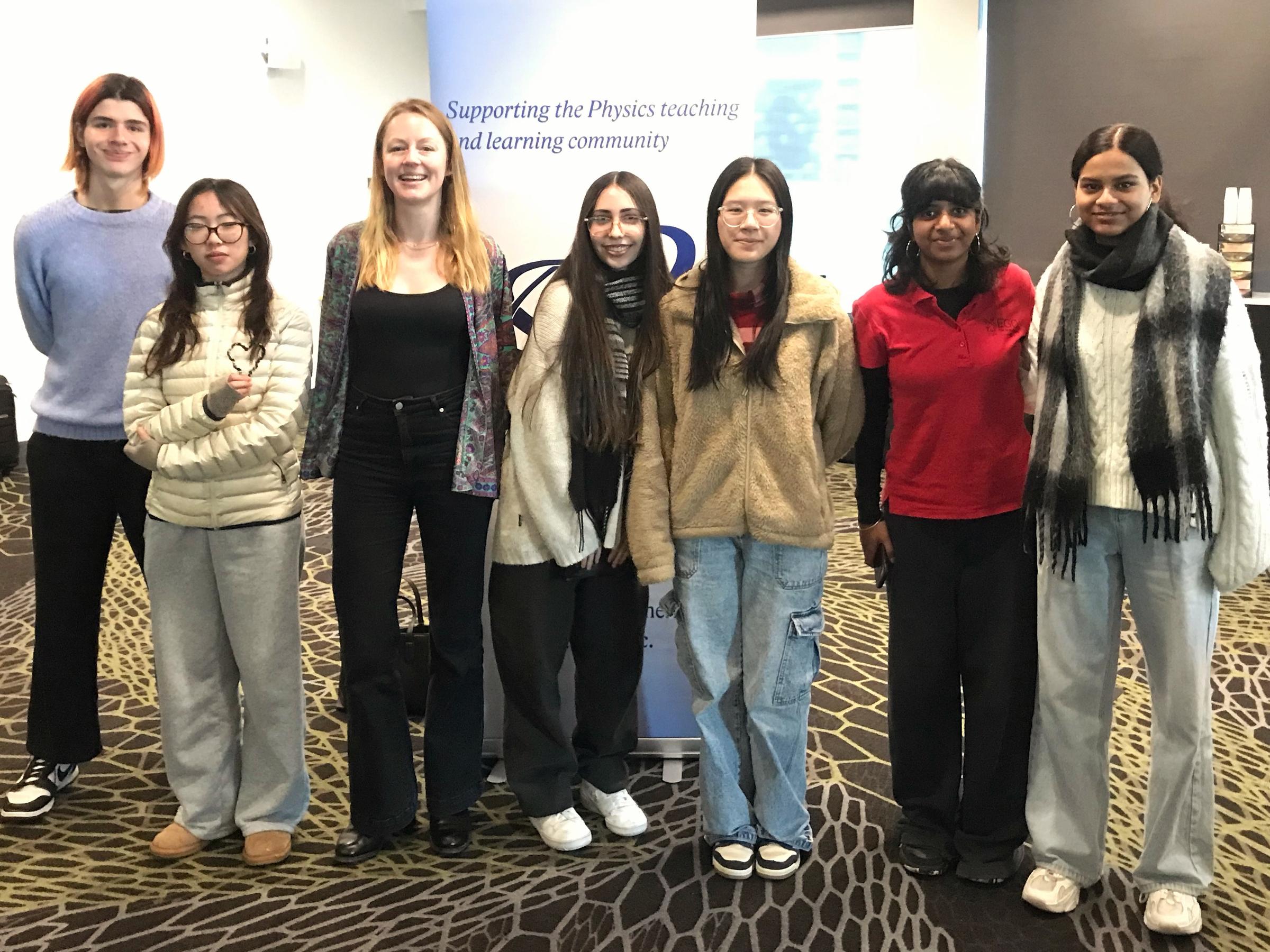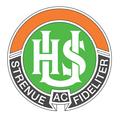Girls in Physics Breakfast 2025

The teacher said it was the coldest morning he’s ever been out. It was 7am and we stood huddled at the 58 tram stop on Flemington Road, waiting for the tram to take us (Mr Cuthbert and six University High School students) to the William Angliss Institute to attend the Girls in Physics Breakfast.
When we arrived, we were greeted with hot drinks, name tags, and table numbers. We each soon sat down at our assigned tables, where we could meet other students from all over Victoria who were also interested in physics. Every table had a couple of women who had built their careers around physics or engineering. It was lovely to talk to them about their journeys in the field. The women I was seated with worked for Telstra in electrical engineering, developing cooling technology for massive power centres.
As we began to tuck into the array of delicious pastries, yoghurts, and juices, we were given the challenge of building the tallest tower we could out of a bunch of pipe cleaners. It got us strategizing and engineering with the people on our table and this was honestly a great icebreaker.
After this, and very fittingly for the 100th year of quantum physics, the star speaker - UNSW Engineering Researcher Dr Danielle Holmes - took the stage to speak about quantum physics, specifically her work in building components for quantum computers and the incredible future possibilities of quantum computing. Before I attended the breakfast, I didn’t know much about quantum technology at all, but after her excellent presentation, I now feel passionate and optimistic about her work and what quantum computers could bring to the world. She explained some of the potential applications, which included revolutionising climate stabilisation, advancing weather forecasting accuracy (very helpful for Melbourne), increasing cybersecurity, and solving huge logistical problems.
She also gave us a brief history of quantum physics, walked us through the processes she uses to build qubits (the tiny parts that make up a quantum computer), and wrapped up by answering many questions from the audience.
After Dr Holmes’ talk, we had more time to chat with the people on our table and complete a personality evaluation that recommended possible pathways in physics based on our strengths. This activity really opened my eyes to the incredibly broad range of directions physics can take you.
The event as a whole made me realise just how integral physics is to the world around us, and how it cultivates so much of the technology we rely on every day. Considering how important and versatile the field is, it’s pretty concerning that women only hold 20–28% of the jobs in physics, and that gap needs to be bridged. While my class has a fairly even gender split, only about 25% of students who study physics or engineering in VCE are girls, which is disappointing. That’s why events like the Girls in Physics Breakfast are so important, they help girls who are curious about the field to imagine themselves in it by shining a light on successful, accomplished women. There are so many possibilities in physics, from radiology to aviation to biophysics to science communication and education.
I can confidently say that being exposed to so many different pathways and seeing so many women and girls genuinely excited about the subject, has deepened my own interest in physics. It made something that once felt like a “boys’ subject”, historically dominated by men, feel more open and inviting. It showed that with the right support, visibility, and representation to counteract centuries of female STEM erasure, and the propaganda against the natural ability of women to excel in physics, that it is a subject for everyone.
In conclusion, the breakfast was absolutely worth the freezing and early start, not just for the food, but for the amazing people I met, the knowledge I gained, and the inspiration I walked away with.
Article by Twinkle Raut, Year 10
